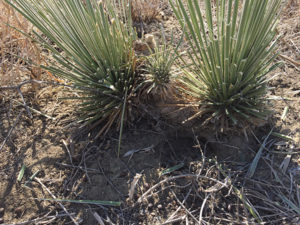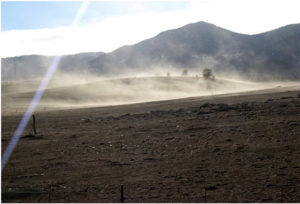What is the future of our open space properties?
By Linda Parks
I had the opportunity to attend the first Gunbarrel Hill Open Space meeting in January hosted by Boulder Open Space and Mountain Park (OSMP) where OSMP has started asking for the community’s help in realizing the vision of this open space (many of us who ride this area may know it as Heatherwood). This area currently appears to be a healthy and balanced wildlife habitat, it is also an enjoyable recreational area for hikes and horseback riding. The Gunbarrel Hill open space is bordered west to east by 75th and 95th Streets, and north to south from Lookout Road to the White Rocks area. I affords one with spectacular views of the front range and the snow capped Longs Peak, along with rolling grasslands, songbirds and great footing for a lovely canter.
The evening opened with an informative presentation about the history of the area, the work OSMP did on restoring it, and the ecosystem it created along the way. The reseeding of grasses to restore the fields (one of the longest prairie restoration projects in OSMP’s history), has assisted in the return of ground nesting birds, like the endangered grasshopper sparrow, which will only nest in healthy prairie grassland, to a species of butterfly that will only lay its eggs on two types of grass, and our beautiful meadowlarks.
After the presentations concluded there was a Q + A period. I voiced my concerns to OSMP and asked if they had a defined plan to maintain the prairie dogs on this grassland in order to keep it a “…healthy, and balanced wild habitat”, as I have been observing over the past two years that the three prairie dog colonies are growing at a rapid pace. OSMP could not give me an clear and concise management plan except to say “we are monitoring them”.
We do need to preserve and maintain the future health of our grasslands, agricultural viability, and protect our ecosystem to promote diversity of species and uses. But I can not support OSMP’s wishes for this area unless definitive action is taken to address management practices on not just this property, but ALL properties under their stewardship.
Below are images taken in February 2019, of just one of the three colonies at Gunbarrel Hill. Here is a preview of the growing colony that lies South of the water tank.
[foogallery id=”12835″]
I believe the future of the entire grassland system at Gunbarrel Hill is at risk should OSMP and City Council not take direct measures to address the growing populations of prairie dog colonies here and on ALL of our open space lands.
There are many birds that use grasslands for nesting, you may be familiar with the Western Meadowlark.

The Western Meadowlark sings such a wonderful song. These birds eat both grain and weed seeds along with insects. In late spring and summer they probe the soil and poke beneath dirt clods and manure piles seeking beetles, ants, cutworms, grasshoppers, and crickets. The female chooses a nesting spot on the ground in pastures, at the base of yucca, on prairies and other grassland habitat. She seeks out a small dip or depression such as a cow footprint, often shielded by dense vegetation that can make the nest difficult to see.
She uses her bill to shape a depression in the soil into a cup-like shape, then lines the nest with soft, dry grasses and the pliable stems of shrubs. Although some nests are simple grass-lined bowls, Western Meadowlarks often use the vegetation around the nest cup as an anchor to create a hoodlike, waterproof dome over the nest by weaving together grass and shrub stems. When finished the nest is 7–8 inches across, with a cup that is 4–5 inches across and 2–3 inches deep. It can take 6–8 days for the female to build the season’s first nest. As the parents move back and forth from the nest they create short “runways” into surrounding grasslands.

We need to reconsider our management practices in order to preserve and maintain a healthy and viable ecosystem.
One does not have to look far to see how the growth of colonies on fragmented Boulder County open space lands has led to the destruction of our grasslands along with the disappearance of songbirds and other species.
I have observed the complete destruction by prairie dogs at the Boulder Valley Ranch (BVR) open space, which I have visited almost daily since 1994— I board my horses here. Not only has the open space lands been severely damaged and the soils compromised, but also the adjoining agricultural leased land. Hay production and grazing acres are down, and ranchers are having to sell off livestock. Colonies are entering the hays fields and the horse pastures are filled with holes. The overpopulated colonies have destroyed the ecosystem and denuded the lands of grasses, wildflowers and the many species dependent on grasses for survival.
We no longer see native grasses here, few butterflies, and significantly less songbirds are seen. What do we see? Heavily damaged soils, an overgrowth of invasive weeds, and frequent dust storms. I cite from a thesis published in 2013, Impacts of Urban Prairie Dogs on Soils in Boulder, Colorado by Matthew Oliver, University of Colorado, Boulder.
“The Colorado Front Range has experienced a significant increase in urbanization and habitat fragmentation over the past half century. This increase in urbanization has created a highly fragmented landscape with areas of green space surrounded by urban and suburban environments. Along the Front Range of Colorado, the intense foraging and grazing habits of native black-tailed prairie dogs (Cynomys ludovicianus) on fragmented Open Space Mountain Park lands is interacting with erosional forces, nonnative plant invasions, and global climate change resulting in what could be considered novel shrubland communities.”…’This has significant implications for land managers in Boulder if they aim to preserve the native grassland ecosystems on Boulder County Open Space and Mountain Parks’ lands.
Click here to read the full thesis.
Even though prairie dogs are considered a ‘keystone species’ they have in recent years contributed to dust storms and loss of native species along the front range due to the loss of grassland coverage, soil erosion and climate change. Our fragmented landscape restricts natural movement, unlike Wind Cave National Park where colonies have been studied. The result is that higher density occurs. This has led to critical loss of soil nutrients, the degradation of the native grassland ecosystems and the loss of biological diversity. Urban prairie dog colonies on fragmented lands are impacting our grasslands, unlike the historical studies which were performed on unfragmented landscapes. Urban colonies are not having a positive impact on our environment (see page 56 of Impacts of Urban Prairie Dogs on Soils in Boulder, CO).
High burrow densities like BVR have led to decreased native vegetation and an increase of non-native vegetation. Along with the prairie dog expansion into agricultural fields where it is affecting the management practices of the lease holders they are losing the ability to effectively irrigate, safe equipment use on these parcels, and are experience huge production yield losses. The future of not only our agriculture but all our OSMP lands will depend on how we manage prairie dogs on our fragmented properties —the outlook is bleak and the landscape will be forever changed.
OSMP has spent many years, and thousands of dollars restoring the Gunbarrel Hill grasslands—the restoration project was very successful. But, I personally would be hard-pressed to give them my support in “conserving natural grasslands” without a defined management plan, and I can not see supporting relocation at an approximate cost per prairie dog of approximately $1,500 (with a 75% mortality rate), on top of the use of the application of Deltametrhin.
Deltamethrin (Delta Dust)— a Synthetic Pyrethroid
OSMP is applying this on the sending site when they relocate prairie dogs. The active ingredient in Delta Dust is deltamethrin. Deltamethrin is a pyrethroid, a synthetic chemical made to mimic the components and effects of the natural insecticide pyrethrin. It is a broad-spectrum insecticide used both indoors and outdoors and kills target insects via ingestion or direct contact by interfering with normal production and function of signals in the insect’s nervous system. Visit this link to further information (starting on page 26) from the January 15, 2019 Boulder City Council Minutes.
Dangers to Wildlife and Environmental Impact
Although it is only mildly toxic to most birds, Delta Dust is labeled as extremely toxic to fish and aquatic invertebrates. It is also highly toxic to beneficial insects like honeybees and beneficial predators that kill pest insects, such as the predatory mite Typhodromum pyri and the parasitic wasp Encarsia formosa.
I don’t know about you, but I find it hard to support OSMP on future Gunbarrel Hill management plans, unless definitive action is taken to address the three prairie dog colonies at this location and on other OSMP properties.
What are your concerns and observations? Do you think OSMP and City Council should be doing more?
If you look around what do you see? How can our agricultural farmers and ranchers (who mostly manage our OSMP agricultural properties) make it viable to continue their leases, and continue to take care of our lands, grow food and provide hay for our livestock. OSMP is gathering input to understand community interests, concerns and values for the Gunbarrel Hill area management plan.
Others ways to help:
Write a letter to OSMP and City Council to let them know you are concerned about our open space, agricultural lands and horse-keeping in Boulder County. You can also attend OSMP meetings, held once per month, and sign-up and talk about what concerns you—your face and voice makes a difference!
Click here to receive e-mails from OSMP
If you are a barn owner, boarder, private horse facility, land owner, or agricultural property, BCHA would like to hear your concerns.We invite you to attend our monthly board meetings—typically held in the evening on the second Tuesday of each month in Boulder from 7 to 9 PM. All are welcome to attend.
